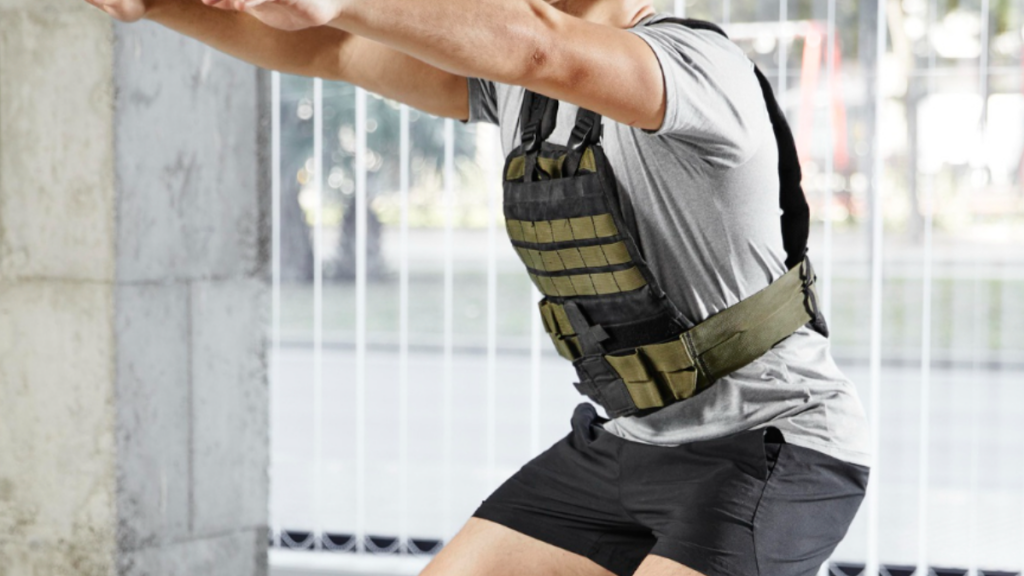A new fitness trend is making its rounds, proving to be a secret weapon to adding gains. Fitness enthusiasts and athletes alike are wearing weighted vests to build strength, and endurance, and improve performance.
Whether you play football, soccer, run track, or compete in any sport that demands power and endurance, incorporating a weight vest into your workouts can help improve both speed and stamina in ways traditional training might not.
Why Train With a Weighted Vest?
Weight vests add extra resistance to your body during movement. That resistance challenges your muscles, heart, and lungs to work harder than with just body weight body weight.
With consistent use, this increased workload can lead to improved cardiovascular capacity, explosive strength, and muscular endurance—all crucial elements for sports performance.
For example, a soccer player training with a weighted vest might notice faster recovery between sprints and greater endurance during second halves. A football player might feel more powerful off the line. Track athletes could experience more explosive starts and better sprint finishes.
The idea is that when wearing the vest, the added weight and resistance make drills harder. Then when the vest comes off, your body feels lighter and more capable of tackling the challenge.
When to Train With a Weight Vest
Like any training tool, athletes need to know when, how, and how much to load.
The best time for high school athletes to start incorporating weighted vests into training is during the off-season or preseason. This gives the body enough time to adapt to the added load without the pressure of weekly games or meets.
Since weighted training is intense, it shouldn’t be done every day. Athletes should start wearing it just once or twice a week to begin. Only wear the vest for 10 minutes, increasing the length as the body adapts.
Weighted vest workouts are ideal for short, high-intensity drills, like sprints, plyometric exercises, and short-distance agility work. Avoid using them for long-distance runs or prolonged sessions, which can lead to joint stress and fatigue.
Weighted Vests Tips
Start Light
Choose a vest that weighs about 5–10% of your body weight. For most teen athletes, that’s between 8–15 pounds. You can always add more later as you adapt. It’s best to start light because even 10 pounds will feel heavy. A great tip is to wear it around the house for the first few times for a few minutes to get used to the load. Then athletes can bring it to the gym or wear it during a walk.
Focus on Form
The extra weight means extra strain. Keep your movements controlled and your posture solid. If your form breaks down, remove the vest. The good thing about a weighted vest is it does improve posture, which can help runners.
Don’t Overuse It
Weighted vests are best used as a challenge, not a daily crutch. Overtraining with a vest can increase the risk of injury, especially for growing athletes. Only use is one to two times a week.
Warm Up Thoroughly
Always properly warm up before adding a vest to any workout. Start with dynamic stretching and light cardio.
Stay Hydrated and Listen to Your Body
Weighted training elevates your heart rate quickly. Take breaks when needed and pay attention to signs of fatigue. Make sure you can safely take off the vest when the load becomes too much.
Sample Weighted Vest Workouts for Speed and Stamina
1. Sprint Intervals (Track or Turf)
- Warm-up jog (5 minutes, no vest)
- 4 x 20-yard sprints (wear vest)
- Rest 30 seconds between sprints
- 2-minute break
- 4 x 40-yard sprints (remove vest for last 2)
2. Shuttle Runs for Agility
- 5-10-5 shuttle drill (3 sets with vest)
- Rest 60 seconds between sets
- Focus on quick cuts and sharp turns
3. Plyometric Power Circuit
- Box jumps – 3 sets of 5 (with vest)
- Jump squats – 3 sets of 10
- Burpees – 2 sets of 10 (no vest, for cooldown)
- Rest 90 seconds between rounds
Final Thoughts
Weighted vests can be a game-changing tool for high school athletes who want to push their conditioning beyond the basics. When used strategically—during the off-season, in short bursts, and with attention to form—they help build the kind of explosive strength and endurance that translates directly to the field, court, or track.

